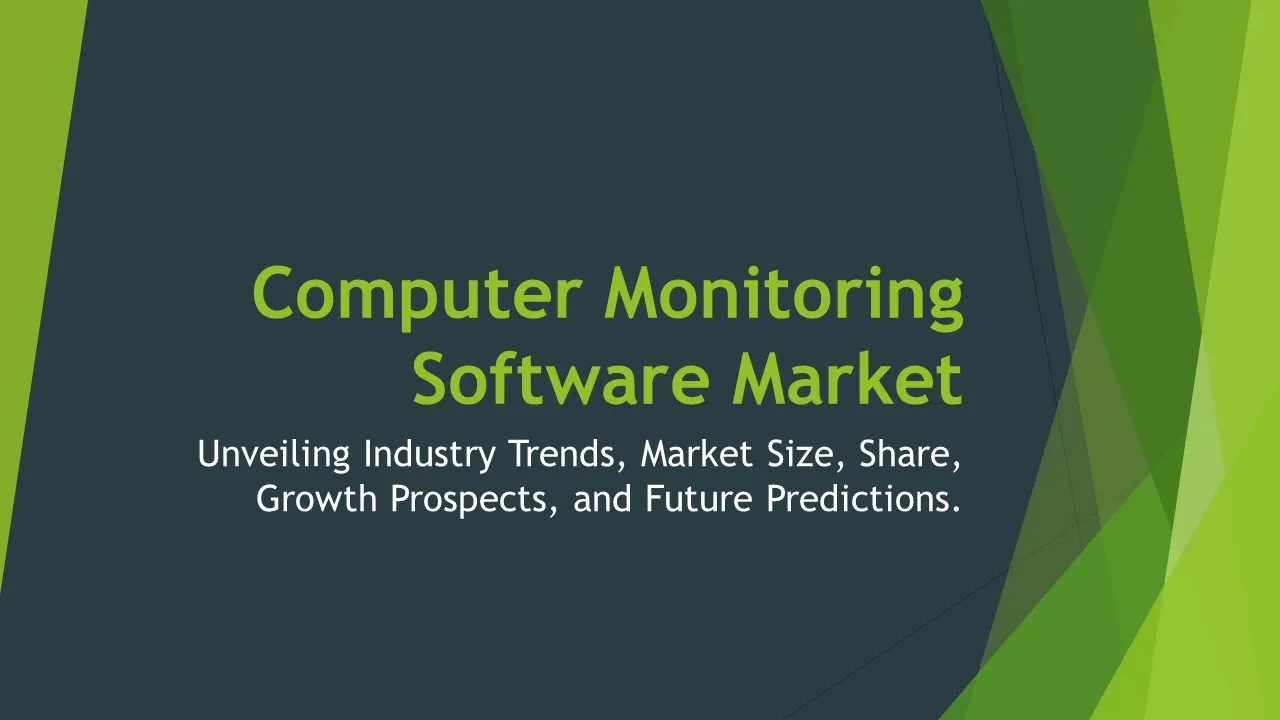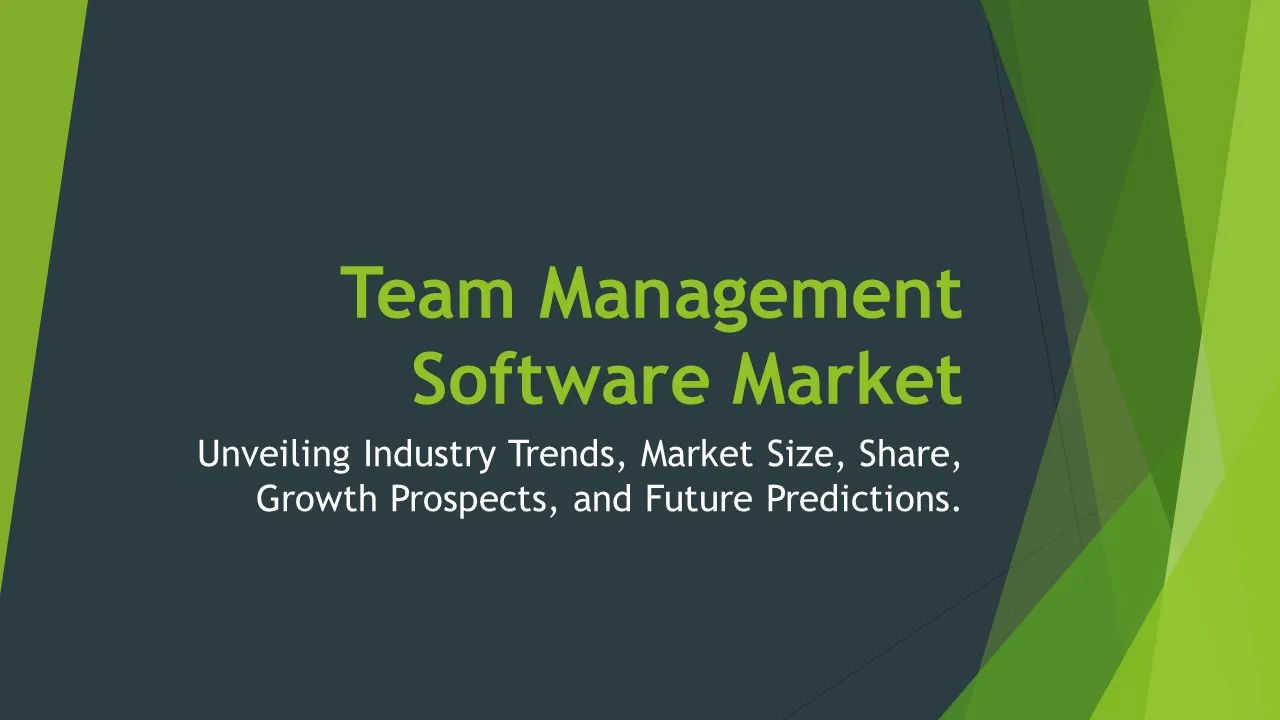Connected Device Analytics
Connected Device Analytics Market Segments - by Component (Software, Services), Deployment Mode (On-premise, Cloud-based), Organization Size (Large Enterprises, Small and Medium-sized Enterprises), End-User Industry (IT and Telecom, Healthcare, Manufacturing, Retail, Transportation, Others), and Region (North America, Europe, Asia Pacific, Latin America, Middle East & Africa) - Global Industry Analysis, Growth, Share, Size, Trends, and Forecast 2025-2035
- Report Preview
- Table Of Content
- Segments
- Methodology
Connected Device Analytics Market Outlook
The global Connected Device Analytics Market is poised for significant growth, with a projected market size reaching approximately USD 20 billion by 2035, reflecting a compound annual growth rate (CAGR) of around 25% from 2025. This growth can largely be attributed to the rapid increase in the adoption of IoT devices across various industries, leading to an exponential rise in the volume of data generated. As organizations increasingly recognize the value of data-driven decision-making and predictive analytics, the demand for sophisticated analytics solutions that can process, analyze, and derive insights from connected device data is surging. The proliferation of smart devices, along with advancements in machine learning and artificial intelligence, is further driving the need for analytics tools that can deliver real-time insights and facilitate operational efficiencies. Furthermore, the integration of connected devices within existing infrastructures is becoming more seamless, enabling businesses to leverage analytics for enhanced performance and competitive advantage.
Growth Factor of the Market
The Connected Device Analytics Market is witnessing growth due to several pivotal factors that enhance its demand in various sectors. Firstly, the surging adoption of Internet of Things (IoT) technologies is driving the need for analytics solutions to manage and interpret the vast amounts of data generated by connected devices. With more devices coming online, organizations are seeking effective ways to analyze this data to gain insights into consumer behavior and optimize their operations. Furthermore, the increasing focus on enhancing customer experiences is pushing businesses to leverage analytics for personalized services and targeted marketing strategies. Another significant growth factor is the rising need for operational efficiency and cost reduction, prompting enterprises to utilize analytics to improve asset management and supply chain processes. Moreover, the growing emphasis on data security and compliance is leading companies to invest in analytics solutions that ensure data integrity and protection, thereby contributing to market growth.
Key Highlights of the Market
- The market is expected to reach USD 20 billion by 2035, growing at a CAGR of 25%.
- North America holds the largest market share, driven by high IoT adoption rates.
- Cloud-based deployment modes are gaining traction for their scalability and cost-effectiveness.
- The healthcare sector is one of the fastest-growing end-user industries for connected device analytics.
- Advanced machine learning algorithms are increasingly being integrated into analytics solutions.
By Component
Software:
The software component of the Connected Device Analytics market encompasses a variety of applications designed to collect, process, and analyze data from connected devices. This segment is pivotal as it provides the necessary tools and frameworks that enable organizations to derive insights from data streams in real time. Software solutions can vary from simple dashboards that display key performance indicators to sophisticated predictive analytics platforms that leverage machine learning algorithms to forecast trends. The growing complexity of data generated by connected devices necessitates advanced analytics software that can handle large volumes of information efficiently, leading to better decision-making processes across industries. Furthermore, the integration of artificial intelligence capabilities into analytics software is enhancing its effectiveness, allowing businesses to automate insights and responses based on real-time data analysis.
Services:
The services segment of the Connected Device Analytics market includes consulting, implementation, and support services that help organizations effectively deploy and utilize analytics solutions. As companies increasingly invest in connected devices and analytics technologies, the demand for expert services to optimize these systems is on the rise. Service providers offer critical assistance in areas such as system integration, data management, and analytics strategy development, ensuring organizations can fully leverage their analytics capabilities. Moreover, ongoing support and maintenance services are essential for keeping analytics systems up-to-date and performing optimally as technologies evolve. This segment's growth is driven by the need for organizations to not only implement analytics solutions but also to continuously adapt to changing business environments and technological advancements.
By Deployment Mode
On-Premise:
The on-premise deployment mode for Connected Device Analytics solutions involves installing software and managing infrastructure within an organization's own facilities. This approach is favored by companies that prioritize data security and control over their analytics systems. On-premise solutions allow organizations to customize their analytics environment to meet specific business needs and regulatory requirements. However, they often require significant upfront investment and ongoing maintenance costs, which can be a barrier for smaller organizations. Despite these challenges, on-premise deployment remains relevant for industries with stringent data privacy regulations, as it provides greater control over sensitive information. As such, organizations in sectors like finance and healthcare often opt for on-premise solutions to ensure compliance with data protection laws.
Cloud-Based:
The cloud-based deployment mode for Connected Device Analytics is experiencing rapid adoption due to its inherent flexibility and scalability. This model allows organizations to access analytics solutions over the internet, reducing the need for extensive on-premise infrastructure and associated maintenance costs. Cloud-based analytics platforms can easily scale to accommodate growing data volumes and provide real-time access to insights from anywhere in the world. The pay-as-you-go pricing model associated with cloud services also makes it an attractive option for small and medium-sized enterprises (SMEs) that may have limited budgets. Additionally, cloud-based analytics solutions often come with built-in security measures and automatic updates, ensuring that organizations can stay ahead of technological advancements without incurring additional costs. This deployment mode is particularly beneficial for industries that require rapid deployment and flexibility in their analytics capabilities.
By Organization Size
Large Enterprises:
Large enterprises are significant adopters of Connected Device Analytics solutions, primarily due to their extensive data requirements and the complexity of their operations. These organizations often operate in highly competitive environments where data-driven insights can provide a substantial advantage. Large enterprises typically have the resources to invest in advanced analytics tools and skilled personnel who can interpret complex data sets, leading to improved operational efficiencies and enhanced customer experiences. Furthermore, these organizations frequently deploy analytics across multiple departments, from marketing to supply chain management, to drive strategic initiatives and optimize performance. The ability to integrate analytics into existing systems and processes also positions large enterprises to harness the power of data effectively, making it a critical component of their overall business strategy.
Small and Medium-Sized Enterprises:
Small and medium-sized enterprises (SMEs) are increasingly recognizing the value of Connected Device Analytics as a means to compete with larger organizations. Although SMEs may face budget constraints, the availability of affordable cloud-based analytics solutions has democratized access to advanced analytics tools. By leveraging analytics, SMEs can gain insights into customer behaviors, optimize inventory management, and enhance marketing strategies without the need for extensive IT infrastructure. Moreover, many SMEs are using analytics to streamline operations and reduce costs, allowing them to allocate resources more effectively. As the market for connected devices expands, SMEs that embrace analytics will be better positioned to adapt to market changes and improve their overall business agility, making them more resilient in an evolving economy.
By User Industry
IT and Telecom:
The IT and Telecom sectors are at the forefront of adopting Connected Device Analytics, leveraging data generated from various devices to enhance service delivery and customer engagement. With the rapid growth of connected devices within these industries, organizations are focused on utilizing analytics to optimize network performance, manage resources efficiently, and provide personalized services. Analytics solutions in this segment help companies monitor data traffic, predict network issues, and implement proactive measures to ensure seamless connectivity. Moreover, the insights gained from analytics are instrumental in developing innovative service offerings, thereby enhancing customer satisfaction and loyalty. As the demand for high-speed internet and connectivity continues to rise, IT and telecom companies increasingly rely on analytics to stay competitive in a dynamic market.
Healthcare:
The healthcare industry is witnessing a significant transformation due to the integration of Connected Device Analytics, which is revolutionizing patient care and operational efficiency. By analyzing data from medical devices, wearables, and electronic health records, healthcare providers can gain valuable insights into patient health, treatment effectiveness, and resource utilization. Analytics solutions enable organizations to monitor patient vitals in real time, identify trends, and make informed decisions regarding treatment plans. Furthermore, leveraging analytics helps healthcare providers streamline operations, reduce costs, and enhance patient outcomes through personalized care. The COVID-19 pandemic has accelerated the adoption of connected devices and analytics in healthcare, highlighting the importance of data in managing public health and improving patient management systems.
By Region
The regional analysis of the Connected Device Analytics Market indicates that North America currently dominates the market, accounting for approximately 40% of the total share due to the high penetration of IoT technologies and a robust healthcare infrastructure. The region's emphasis on technological innovation and data-driven decision-making among industries such as IT and telecommunications further facilitates market growth. Additionally, North America boasts a well-established ecosystem of analytics solution providers, which enables organizations to adopt advanced analytics capabilities readily. The CAGR for the North American market is projected to be around 24% over the next decade, driven by continuous advancements in cloud computing and machine learning technologies.
Europe follows closely, holding around 30% of the market share, with a strong emphasis on data privacy regulations and compliance, particularly with the General Data Protection Regulation (GDPR). The European market is experiencing notable growth due to the rising adoption of connected devices across various sectors, including manufacturing and transportation. The ongoing digital transformation initiatives and investments in smart technology deployment across industries further support the expanding demand for connected device analytics in the region. As organizations prioritize data security and compliance, the emphasis on analytics solutions that offer robust data protection features is expected to drive growth in the European market.
Opportunities
The Connected Device Analytics Market presents substantial opportunities for innovation and expansion, particularly with the proliferation of IoT technologies across multiple sectors. As organizations increasingly seek to optimize their operations and improve customer experiences, the demand for advanced analytics solutions is expected to rise. Companies can capitalize on this trend by developing specialized analytics tools tailored to specific industries, such as healthcare, retail, and manufacturing. Additionally, the integration of artificial intelligence and machine learning capabilities into analytics platforms offers opportunities for enhancing predictive analytics and automating decision-making processes. Moreover, as the market evolves, businesses can explore partnerships and collaborations with technology providers to enhance their analytics capabilities and offer bundled solutions that integrate analytics with other services. The ongoing evolution of connected devices, such as smart home technologies and industrial IoT applications, further underscores the potential for growth in analytics services that cater to these emerging technologies.
Another area ripe for opportunity within the Connected Device Analytics Market is the expansion into developing regions, where the adoption of connected devices is on the rise. Emerging markets in Asia Pacific, Latin America, and the Middle East & Africa are witnessing increased investments in digital infrastructure and IoT technology adoption. Businesses that can provide accessible, scalable analytics solutions tailored to the specific needs of these regions will be well-positioned to capture market share. Furthermore, as organizations in these regions begin to recognize the value of data-driven insights, there is a growing demand for training and support services to help them make the most of their analytics investments. This presents an opportunity for companies to offer comprehensive service packages that include consultancy, implementation, and ongoing support to empower businesses to effectively utilize connected device analytics.
Threats
Despite the promising growth trajectory of the Connected Device Analytics Market, several threats could impede its progress. A significant concern is the increasing risk of cyber threats and data breaches, which can undermine consumer trust and lead to regulatory consequences for organizations. The vast amounts of data generated by connected devices make them attractive targets for cybercriminals, necessitating robust security measures and protocols to safeguard sensitive information. Additionally, organizations may face challenges in effectively managing and integrating data from disparate sources, leading to potential insights being lost or misinterpreted. The lack of standardized frameworks for data sharing and analytics could further complicate matters, creating barriers for companies attempting to leverage connected device analytics fully. Furthermore, the rapidly evolving technology landscape presents the risk of organizations falling behind if they do not continuously innovate and adapt their analytics solutions to meet changing market demands.
Another pressing concern is the regulatory environment surrounding data privacy and protection, which is becoming increasingly stringent across various countries and regions. Compliance with regulations such as GDPR in Europe and the California Consumer Privacy Act (CCPA) in the United States can impose additional burdens on organizations attempting to leverage connected device analytics. Companies must invest considerable resources in ensuring compliance, which may divert attention from core business operations. This potential for increased regulatory scrutiny may deter some businesses from fully embracing analytics solutions, particularly smaller enterprises with limited resources. As the market evolves, organizations must remain vigilant in addressing these regulatory challenges while balancing the need for innovation and growth.
Competitor Outlook
- IBM Corporation
- Oracle Corporation
- Microsoft Corporation
- SAP SE
- Cisco Systems, Inc.
- Siemens AG
- Tableau Software, LLC
- Google Cloud
- Amazon Web Services, Inc.
- Alteryx, Inc.
- Splunk Inc.
- MicroStrategy Incorporated
- Salesforce.com, Inc.
- QlikTech International AB
- Hitachi Vantara Corporation
The competitive landscape of the Connected Device Analytics Market is characterized by the presence of several key players that are continually innovating to provide advanced solutions and services. Leading companies such as IBM Corporation and Oracle Corporation are at the forefront of this market, offering comprehensive analytics platforms that integrate seamlessly with various connected devices. These organizations are investing heavily in research and development to enhance their AI and machine learning capabilities, enabling them to provide more accurate insights and predictive analytics solutions. Moreover, strategic partnerships and collaborations with technology providers are common among these competitors to expand their market reach and improve their service offerings. The competitive dynamics are further intensified by the presence of emerging players that focus on niche markets and specific industry requirements, contributing to a vibrant ecosystem of analytics solutions.
Major companies like Microsoft Corporation and SAP SE are also actively working to enhance their analytics capabilities, leveraging cloud technologies to deliver scalable solutions that cater to a wide range of industries. Their focus on user-friendly interfaces and real-time data processing has made them popular choices among organizations seeking to harness the power of connected device analytics. Furthermore, companies such as Siemens AG and Cisco Systems, Inc. are integrating connected device analytics with their existing industrial and telecommunications solutions, creating comprehensive ecosystems that optimize operations and improve decision-making processes. As these companies continue to evolve their offerings, organizations can expect to see innovative analytics tools that not only provide valuable insights but also integrate seamlessly with other business functions.
In addition to these established players, newer entrants such as Tableau Software, LLC and Alteryx, Inc. are making significant inroads into the Connected Device Analytics Market by offering specialized solutions tailored to specific industry needs. These companies are focusing on simplifying data visualization and making analytics more accessible for organizations of all sizes. With the increasing importance of data storytelling and insights-driven decision-making, companies that can provide easy-to-use analytics platforms are well-positioned to capture market share. As competition intensifies, organizations must stay ahead by continually upgrading their analytics capabilities and exploring partnerships that enhance their service offerings, ensuring they remain relevant in a rapidly evolving market.
1 Appendix
- 1.1 List of Tables
- 1.2 List of Figures
2 Introduction
- 2.1 Market Definition
- 2.2 Scope of the Report
- 2.3 Study Assumptions
- 2.4 Base Currency & Forecast Periods
3 Market Dynamics
- 3.1 Market Growth Factors
- 3.2 Economic & Global Events
- 3.3 Innovation Trends
- 3.4 Supply Chain Analysis
4 Consumer Behavior
- 4.1 Market Trends
- 4.2 Pricing Analysis
- 4.3 Buyer Insights
5 Key Player Profiles
- 5.1 SAP SE
- 5.1.1 Business Overview
- 5.1.2 Products & Services
- 5.1.3 Financials
- 5.1.4 Recent Developments
- 5.1.5 SWOT Analysis
- 5.2 Siemens AG
- 5.2.1 Business Overview
- 5.2.2 Products & Services
- 5.2.3 Financials
- 5.2.4 Recent Developments
- 5.2.5 SWOT Analysis
- 5.3 Splunk Inc.
- 5.3.1 Business Overview
- 5.3.2 Products & Services
- 5.3.3 Financials
- 5.3.4 Recent Developments
- 5.3.5 SWOT Analysis
- 5.4 Google Cloud
- 5.4.1 Business Overview
- 5.4.2 Products & Services
- 5.4.3 Financials
- 5.4.4 Recent Developments
- 5.4.5 SWOT Analysis
- 5.5 Alteryx, Inc.
- 5.5.1 Business Overview
- 5.5.2 Products & Services
- 5.5.3 Financials
- 5.5.4 Recent Developments
- 5.5.5 SWOT Analysis
- 5.6 IBM Corporation
- 5.6.1 Business Overview
- 5.6.2 Products & Services
- 5.6.3 Financials
- 5.6.4 Recent Developments
- 5.6.5 SWOT Analysis
- 5.7 Oracle Corporation
- 5.7.1 Business Overview
- 5.7.2 Products & Services
- 5.7.3 Financials
- 5.7.4 Recent Developments
- 5.7.5 SWOT Analysis
- 5.8 Cisco Systems, Inc.
- 5.8.1 Business Overview
- 5.8.2 Products & Services
- 5.8.3 Financials
- 5.8.4 Recent Developments
- 5.8.5 SWOT Analysis
- 5.9 Salesforce.com, Inc.
- 5.9.1 Business Overview
- 5.9.2 Products & Services
- 5.9.3 Financials
- 5.9.4 Recent Developments
- 5.9.5 SWOT Analysis
- 5.10 Microsoft Corporation
- 5.10.1 Business Overview
- 5.10.2 Products & Services
- 5.10.3 Financials
- 5.10.4 Recent Developments
- 5.10.5 SWOT Analysis
- 5.11 Tableau Software, LLC
- 5.11.1 Business Overview
- 5.11.2 Products & Services
- 5.11.3 Financials
- 5.11.4 Recent Developments
- 5.11.5 SWOT Analysis
- 5.12 Amazon Web Services, Inc.
- 5.12.1 Business Overview
- 5.12.2 Products & Services
- 5.12.3 Financials
- 5.12.4 Recent Developments
- 5.12.5 SWOT Analysis
- 5.13 QlikTech International AB
- 5.13.1 Business Overview
- 5.13.2 Products & Services
- 5.13.3 Financials
- 5.13.4 Recent Developments
- 5.13.5 SWOT Analysis
- 5.14 MicroStrategy Incorporated
- 5.14.1 Business Overview
- 5.14.2 Products & Services
- 5.14.3 Financials
- 5.14.4 Recent Developments
- 5.14.5 SWOT Analysis
- 5.15 Hitachi Vantara Corporation
- 5.15.1 Business Overview
- 5.15.2 Products & Services
- 5.15.3 Financials
- 5.15.4 Recent Developments
- 5.15.5 SWOT Analysis
- 5.1 SAP SE
6 Market Segmentation
- 6.1 Connected Device Analytics Market, By Component
- 6.1.1 Software
- 6.1.2 Services
- 6.2 Connected Device Analytics Market, By User Industry
- 6.2.1 IT and Telecom
- 6.2.2 Healthcare
- 6.2.3 Manufacturing
- 6.2.4 Retail
- 6.2.5 Transportation
- 6.2.6 Others
- 6.3 Connected Device Analytics Market, By Deployment Mode
- 6.3.1 On-premise
- 6.3.2 Cloud-based
- 6.4 Connected Device Analytics Market, By Organization Size
- 6.4.1 Large Enterprises
- 6.4.2 Small and Medium-sized Enterprises
- 6.1 Connected Device Analytics Market, By Component
7 Competitive Analysis
- 7.1 Key Player Comparison
- 7.2 Market Share Analysis
- 7.3 Investment Trends
- 7.4 SWOT Analysis
8 Research Methodology
- 8.1 Analysis Design
- 8.2 Research Phases
- 8.3 Study Timeline
9 Future Market Outlook
- 9.1 Growth Forecast
- 9.2 Market Evolution
10 Geographical Overview
- 10.1 Europe - Market Analysis
- 10.1.1 By Country
- 10.1.1.1 UK
- 10.1.1.2 France
- 10.1.1.3 Germany
- 10.1.1.4 Spain
- 10.1.1.5 Italy
- 10.1.1 By Country
- 10.2 Asia Pacific - Market Analysis
- 10.2.1 By Country
- 10.2.1.1 India
- 10.2.1.2 China
- 10.2.1.3 Japan
- 10.2.1.4 South Korea
- 10.2.1 By Country
- 10.3 Latin America - Market Analysis
- 10.3.1 By Country
- 10.3.1.1 Brazil
- 10.3.1.2 Argentina
- 10.3.1.3 Mexico
- 10.3.1 By Country
- 10.4 North America - Market Analysis
- 10.4.1 By Country
- 10.4.1.1 USA
- 10.4.1.2 Canada
- 10.4.1 By Country
- 10.5 Middle East & Africa - Market Analysis
- 10.5.1 By Country
- 10.5.1.1 Middle East
- 10.5.1.2 Africa
- 10.5.1 By Country
- 10.6 Connected Device Analytics Market by Region
- 10.1 Europe - Market Analysis
11 Global Economic Factors
- 11.1 Inflation Impact
- 11.2 Trade Policies
12 Technology & Innovation
- 12.1 Emerging Technologies
- 12.2 AI & Digital Trends
- 12.3 Patent Research
13 Investment & Market Growth
- 13.1 Funding Trends
- 13.2 Future Market Projections
14 Market Overview & Key Insights
- 14.1 Executive Summary
- 14.2 Key Trends
- 14.3 Market Challenges
- 14.4 Regulatory Landscape
Segments Analyzed in the Report
The global Connected Device Analytics market is categorized based on
By Component
- Software
- Services
By Deployment Mode
- On-premise
- Cloud-based
By Organization Size
- Large Enterprises
- Small and Medium-sized Enterprises
By User Industry
- IT and Telecom
- Healthcare
- Manufacturing
- Retail
- Transportation
- Others
By Region
- North America
- Europe
- Asia Pacific
- Latin America
- Middle East & Africa
Key Players
- IBM Corporation
- Oracle Corporation
- Microsoft Corporation
- SAP SE
- Cisco Systems, Inc.
- Siemens AG
- Tableau Software, LLC
- Google Cloud
- Amazon Web Services, Inc.
- Alteryx, Inc.
- Splunk Inc.
- MicroStrategy Incorporated
- Salesforce.com, Inc.
- QlikTech International AB
- Hitachi Vantara Corporation
- Publish Date : Jan 21 ,2025
- Report ID : IT-69574
- No. Of Pages : 100
- Format : |
- Ratings : 4.5 (110 Reviews)









